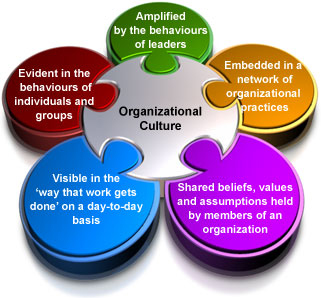 For the past four months, we’ve discussed “story” and how it’s critical to our ministry facilities — in fact, any facility. Story happens, whether intentional or not, which means that our unintentional stories may be defining us in ways that can adversely impact our vision, mission and purpose.
For the past four months, we’ve discussed “story” and how it’s critical to our ministry facilities — in fact, any facility. Story happens, whether intentional or not, which means that our unintentional stories may be defining us in ways that can adversely impact our vision, mission and purpose.
I’m also a fan and blossoming student of organizational culture. Admittedly, I’m not as plugged in or engrossed in “social” culture as many of my friends and colleagues. I live in the suburbs — not sure I would live in an urban setting. I like our 1.5-acre tract of land so I’m not up against a neighbor. My wife and I go to the same restaurant every week for our dates. I rarely go to concerts, museums, art galleries or the like. I’m not a big fan of huge crowds, and I don’t get jazzed about having to go to the mall.
But, I am huge proponent of organizational culture.
I’ve studied the topic — including the art and science of organizational culture — and have listened to podcasts, read books and sought the advice and counsel of trusted advisors. I’ve listened to Andy Stanley and TED Talks, and I’ve read the Harvard Business Review. I’ve read materials by Henry Cloud, Max Dupree, Jim Collins and Seth Godin.
As I’ve been studying this topic more recently, I was struck with the incredible similarity of story and organization culture. They are so similar it’s uncanny. My mind started racing back to the blog posts related to story, and there’s nearly a one-to-one ratio of similarity between these two concepts.
Let me show you:
1) All facilities tell a story — All organizations have a culture: The question with both is, Are they intentional? In the same way you have to be intentional to communicate your unique story with your facility, you have to be as vigilant with establishing, maintaining and growing your organizational culture. If you aren’t, your culture — like your story — will take on a life of its own that may or may not be congruent with who you want to be, who you think you are, and who your “customers” expect you to be.
2) Story vs. fairytale — Authentic vs. sham: Narratives can be fiction or non-fiction. They hold true, or the drape can opened and the Wizard of Oz isn’t at all what was expected or conveyed.
The same is true in organizations culture. Years ago, I heard a saying that goes something like this: “Nothing exposes a bad organization like great marketing.” If you have great marketing and get all sorts of new opportunities to serve your market/community, but your organization isn’t really what you outwardly express, or it doesn’t have the systems in place to address the influx, or it can’t deliver on your promises, the organization is quickly exposed as a fraud. Or, at the very least, it leaves your guests, customers and potential customers with a bad taste in their mouth.
3) Interactions are a critical component of Story — Behavior drives culture: Nice facilities without appropriate interactions can diminish the value of the story. At the same time, a less-than-ideal facility can be overcome with great personal interactions. Unintentional interactions — or those that are incongruent with the story — will erode the story and render it meaningless.
Organizational culture is driven by behaviors, and the best organizational cultures are led by those who understand that these behaviors will be the basis of the culture. Again, if the behaviors aren’t in line with the intended cultural environment, then the desired culture will suffer and the void will be replaced by the masses in ways that may be countercultural with the vision, mission and passions of the organization.
If you want to develop a culture of collaboration, but people don’t respond to email, that culture will never be established, and silos will be formed. If you want to develop a culture of creativity, but you make everyone work in closed door offices, creativity will be stifled. If you’re looking to grow leaders, but do not empower them, they’ll either leave or their passion will be squelched, rendering them less than effective for the organization.
When your organization has a strong internal culture, employees/staff/volunteers love their work and the people they work with. This encourages productivity and increases staff and volunteer retention. Building an organizational culture is part of being a good leader, and caring about your organization and the people in it. This kind of deep-rooted productive culture can’t be conveyed on a plaque or in a memo. It can’t be a one-and-done. It requires diligence, repetitiveness, consistency and shared behaviors that the leaders model, and then empower their teams to live out and transfer to their customers/guests.
The above is true for every organization. Whether you’re a church or a for-profit business, it’s true. Whether you’re a five-person organization or have hundreds of FTEs. Organizational culture is critical — even more critical, in my opinion, than the story of your facility. If you have the culture piece right, the story will be a natural outcropping.
 Tim Cool is project executive at Visioneering Studios in Charlotte, NC, and founder of Cool Solutions Group. Since 1986, Cool has served the church community in the areas of construction, facility planning and facility management. He can be reached at tcool@visioneeringstudios.com. This blog originally appeared on his blog, “Cool Conversations Live.”
Tim Cool is project executive at Visioneering Studios in Charlotte, NC, and founder of Cool Solutions Group. Since 1986, Cool has served the church community in the areas of construction, facility planning and facility management. He can be reached at tcool@visioneeringstudios.com. This blog originally appeared on his blog, “Cool Conversations Live.”



You have shared an interesting article with us. Thanks for sharing.
http://sublimeranking.com/